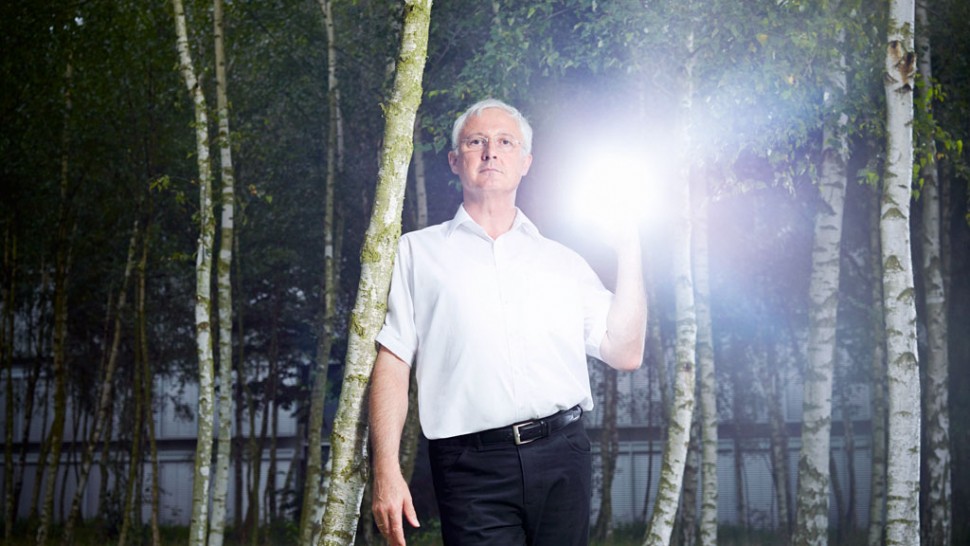The LED street lighting revolution has begun! The new smart grid projects are saving upwards of 60% on operating costs, while having the full ability to control light functions remotely. See how some of the largest cities are beginning to switch over and ask us today how we can help you layout plans for a new smart grid today.
LED STREET LIGHTING
Within a five year span the city of Los Angeles has seen a large overhaul of their electric grid.With new advancements in LED street lighting, skies are darker, and the energy is cleaner than ever before. Once a bright orange blanket that covered the dim night glow of L.A.’s skyline, is now a silvery shimmer, that faintly gives off a cool blue hue. The overhaul, mainly conducted by the director of L.A.’s Bureau of Street Lighting, Ed Ebrahimian, is one of the largest LED street lighting/relighting projects in the world, with spending upwards of $57 million to retrofit the city’s 215,000 lights. With over 400 styles of lampposts to consider, the LED street lighting project still has 60,000 lamps left with a remaining $50 million in spending. It’s definitely no small feat re-lamping that many fixtures, as the director has quite the project underway for his city.
Author, Paul Bogard, writes” What was once a most common human experience has become most rare.” Stating the fact that most of our generation today rarely gets to see the view of the nightsky and stars. What was once inspiration for our fellow ancestors,philosophers, poets, and explorers, is now a dismal view of a scattered skyline of interacting human and natural forces. With the ever demanding growth of business and population, comes large swings in electric demands, crushing city budgets, and putting more of our country’s debt into the hand of its fellow citizens. With new LED street lighting technology coming to market, these views can hopefully become restored in the coming years with lessened light pollution and dimmer light output, creating those majestic night skies, with astronomical views (pun intended).
Although LED’s cost 3-4 times as much as traditional fluorescent or high pressure sodium lamps, the positive benefits outweigh the negative cost effects. If anything, within a few years time the consumer will be able to re-cooperate their negative cost overtime due to the energy savings of LED’s. The main cost effect is within its ability of solid state lighting. A LED, or light emitting diode acts more as a processor rather than a traditional lamp. By relaying information back to its smart switches, LED’s are optimize to use the smallest amount of energy as possible, saving anywhere from 30% to 60% on energy costs. LED street lighting is the optimal grounds for such technology due to the widespread grid of street lighting and it’s numerous fixtures. Another aspect in reducing energy costs is the heat output. LED’s barely give off any heat, if any at all. Whereas traditional lamps give away more energy in their heat output than actual light emission.
Ucillia Wang, author and contributor at Forbes, talks about the opportunities available in the LED street lighting market. As one can see below, not only are the economic factors in LED sales growing, but also growing in energy savings by benefitting and adapting to the new LED street lighting saving technologies. She states, “The business opportunity in the great LED retrofit is enormous. Of the 140 million streetlights installed worldwide last year, only 19 million were LED’s according to IHS Technology. By 2020 LED’s are expected to account for 100 million of the installed base of 155 million streetlights. Annual sales of LED streetlights will jump from $4.3 billion to $10.2 billion in the same time period. Boston, Seattle, and New York City are all undertaking big retrofits. New york’s $76 million project will be the largest in the country : replacing 250,000 lights by 2017. City officials expect to reap $14 million in energy and maintenance spending per year. ” These numbers stated by Ucillia are enormous economic factors to consider in the coming years. LED’s are here to stay, and are even revolutionizing an industry thats been, for a few decades now, needing a new technology spark for some time.
Some of the biggest companies in the lighting industry are adapting new business models towards the LED market, as the ever dwindling traditional lighting market folds on itself. Such brands like Osram, Philips, Panasonic, etc are adapting to the new longevity of their LED products. Today’s LED’s will last anywhere upwards of ten to fifteen years, and many come with a ten year warranty. No longer does a lamp burn out every four to five years which use to create that never ending cycle of consumer purchasing. In todays business model , their focus isn’t so much geared towards replacement purchasing but rather selling new and additional products that focus on controlling and monitoring the LED networks to provide the highest energy efficiency possible. Systems like city wide management of LED street lighting grids can be monitored, dimmed, brightened, etc. These possibilities create a smart grid, with features like notifying the system when a light goes out, or the ability to dim and/or brighten areas that have heavy traffic, or none at all. These systems optimize energy output, and likewise save cities millions of dollars on their energy bill annually.
***
Nick is a graduate of San Diego State University, Class of 2012, with emphasis in Business Management. Join our Facebook Page to learn more about breaking news and leading technology in the Lighting / Electrical industries. https://www.facebook.com/rrlighting
Top Photo: Forbes.com image
Source: (http://www.forbes.com/sites/uciliawang/2014/09/10/bright-lights-big-profits/)

